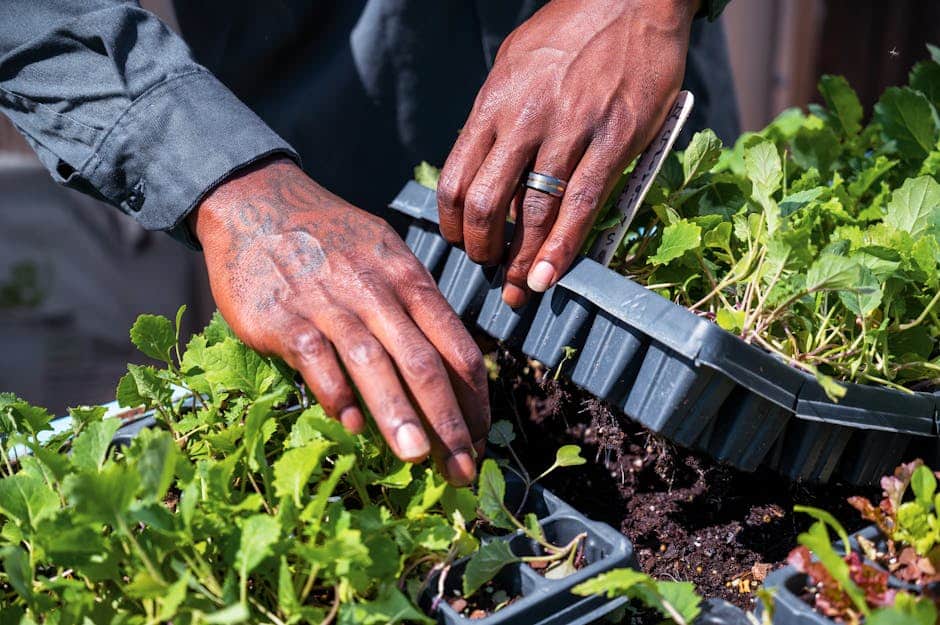How to Grow Beet Microgreens?
Beet microgreens are a nutritious and delicious addition to any diet. These young beet plants are packed with flavor and nutrients, making them a popular choice for health-conscious individuals. If you’re interested in growing your own beet microgreens, there are a few key steps you’ll need to follow to ensure successful growth and harvest.
Choosing the Right Soil
The first step in growing beet microgreens is selecting the right soil. According to Epic Gardening, the best soil for beet microgreens is seed starting soil. This type of soil has a fine texture that is ideal for the delicate roots of beets. Alternatively, Master Microgreens suggests using a nutrient-rich and well-draining soil, such as organic compost or potting mix specifically designed for seedlings. A soil mixture of one part garden or potting soil with one part sand or perlite for aeration can also be used.
Providing Optimal Growing Conditions
Creating the right environment for your beet microgreens is crucial for their healthy growth. Both sources agree that providing adequate light is essential. According to Epic Gardening, beet microgreens require at least 12 hours of light each day. This can be achieved by using a grow light. Bright and indirect sunlight is also suitable. Regular watering is necessary to keep the soil consistently moist but not overly saturated, as mentioned by Master Microgreens.
Planting and Harvesting
When it comes to planting beet microgreens, the process is relatively straightforward. Start by planting the beet seeds in moist soil or a tray filled with a growing medium, ensuring an even distribution of seeds. Lightly cover the seeds with a thin layer of soil, as recommended by Master Microgreens. The seeds will typically germinate within a week.
Harvesting beet microgreens can be done when they reach a height of 3-4 inches or when true leaves have developed, according to Master Microgreens. It is best to harvest them before the first true leaves grow in, as the texture becomes tougher after that. Using kitchen shears or sharp scissors, cut the microgreens just above the soil surface. Take care not to damage the neighboring beet roots. If needed, gently wash the freshly harvested microgreens and store them in the refrigerator until ready for consumption, as suggested by Master Microgreens.
Related Websites:
FAQs:
Q: What are the benefits of growing and consuming beet microgreens?
Beet microgreens are packed with nutrients, including vitamins, minerals, and antioxidants, making them a healthy addition to your diet. They can help support immune function, improve digestion, and promote healthy skin. Growing beet microgreens at home also allows you to have a fresh supply of these nutritious greens readily available.
Q: What are the proper watering techniques for growing beet microgreens?
To properly water beet microgreens, you should use a spray bottle or a gentle watering can with a fine nozzle. Aim to keep the growing medium consistently moist, but not soaked. Avoid overwatering, as it can lead to mold or root rot. It is recommended to mist the microgreens daily or as needed to maintain moisture.
Q: How do I determine the right time to harvest beet microgreens?
Beet microgreens are typically ready to harvest when they have developed their first true leaves, which usually takes around 10-14 days after sowing the seeds. The microgreens should be around 2-3 inches tall. Harvesting at this stage ensures optimal flavor and nutritional value.
Q: What are some creative ways to enjoy beet microgreens?
Beet microgreens can be used in various culinary creations. They add a vibrant color and earthy flavor to salads, sandwiches, and wraps. You can also blend them into smoothies for an extra nutritional boost. Experiment with incorporating beet microgreens into omelets, soups, or even homemade pesto for a unique twist.
Q: What are the nutritional benefits and potential health advantages of beet microgreens?
Beet microgreens are rich in vitamins A, C, and K, as well as minerals like iron, magnesium, and potassium. They also contain dietary fiber and beneficial plant compounds, such as betalains, which have antioxidant and anti-inflammatory properties. Including beet microgreens in your diet can support cardiovascular health, aid in detoxification, and promote overall well-being.






